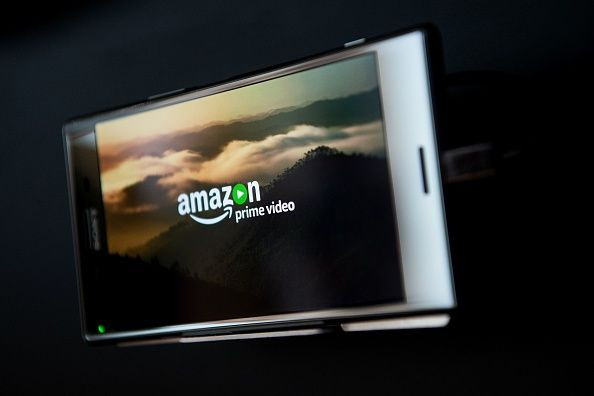Amazon Is Taking A Play Out Of Netflix's Book For Prime Video

Amazon (NASDAQ:AMZN) Prime Video arguably hit its peak in 2016, when Casey Affleck won an Oscar for his performance in Manchester by the Sea and Mozart in the Jungle won the Golden Globe for best musical or comedy series. While Amazon's Marvelous Mrs. Maisel has done well with critics and viewers recently, the company's efforts in film have flopped since it took over distribution in 2017.
Meanwhile, Netflix (NASDAQ:NFLX) has suddenly seen a lot more success with its film output. In fact, Roma has emerged as the frontrunner for Best Picture at the Academy Awards this year. Even so, most of Netflix's films never see the big screen, but still play a vital role in drawing new subscribers to the service.
The new head of Amazon Studios, Jennifer Salke, recently outlined a plan to get the company's film output back in order. It sounds a lot like Netflix's strategy, but on a smaller scale.
Most films won't be in theaters
Salke plans to increase Amazon's film production to 30 films per year by 2020. Most of those "films" will never see much acetate, as they'll be digitally released straight to Prime Video.
Showing a movie in theaters is a requirement for the film to become eligible for most awards. But otherwise, Amazon doesn't have much to gain from giving theaters a chance to screen the film for three months before it shows up on Prime. Splitting box office sales with theater chains isn't really part of Amazon's business model with Prime Video. It doesn't drive Prime subscriptions.
Netflix has the same attitude. The distribution of each of its films should maximize subscriber additions. In the case of some films, that means short-run screenings in art house theaters just to make it eligible for award season.
The downside of the strategy is that big theater chains will not agree to screen a film without a standard 90-day window. That means a lower return on the window Amazon or Netflix do offer the theaters since the movie will have fewer screenings. Again, that revenue is trivial compared to the subscription revenue Amazon and Netflix are working to generate by producing films in the first place.
Creating more crowd pleasers
Amazon Studios has focused a lot on more edgy and artistic films -- those that might attract critical acclaim and awards. "What we struggled with, I think, was putting too much focus on a narrow prestige lane," Salke told The New York Times.
Salke's not completely abandoning those more artistic films, however, as evidenced by Amazon's record-setting shopping spree at Sundance this year. But she is expanding the company's portfolio of films to include more horror and thriller films, as well as "sexy date-night movies."
Likewise, Netflix's film output is full of romantic comedies and other crowd pleasers. It signed a massive deal with Adam Sandler in 2014 and doubled down in 2017. Netflix wasn't looking for critical acclaim with Sandler's films (and it's a good thing, too). Instead, it was aiming to attract Sandler's massive fan base to the platform.
The majority of Amazon's films should fall under the category of movies that get released directly to Prime. After all, only one film can win best picture, but a weekly stream of entertaining flicks can keep subscribers paying $119 per year for a Prime membership.
Why does Prime Video need more films anyway?
Over 100 million Amazon shoppers have access to Prime already. By any measure, Prime membership is very healthy. But growth is certainly slowing, and with such a massive subscriber base, Amazon's focus needs to be just as much on retaining members as attracting new ones.
Amazon has found members that stream video are more likely to renew their memberships. It's also learned that trial members streaming video are more likely to sign up for a full subscription. Increasing the appeal of Prime Video as a gateway to Prime and Amazon's marketplace is the best path forward for the company to keep growing Prime memberships.
Meanwhile, the competition in streaming video is increasing. Major media companies are launching their own streaming services and smaller competitors are investing more in their own original content. As all the competition fights for consumers' entertainment budgets, Amazon has to make its video service more appealing.
Salke is adopting a strategy that Netflix has proven works, and it might just work for Amazon, too.
This article originally appeared in the Motley Fool.
John Mackey, CEO of Whole Foods Market, an Amazon subsidiary, is a member of The Motley Fool's board of directors. Adam Levy owns shares of Amazon. The Motley Fool owns shares of and recommends Amazon and Netflix. The Motley Fool has a disclosure policy.





















